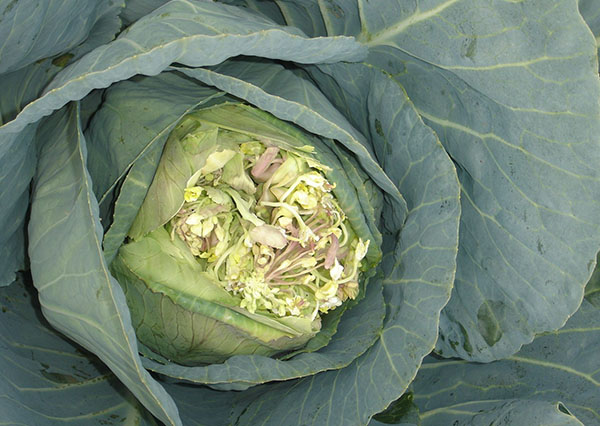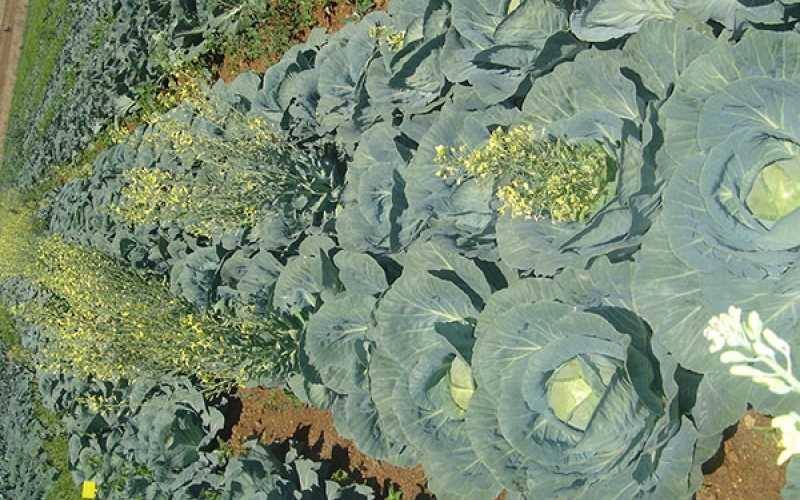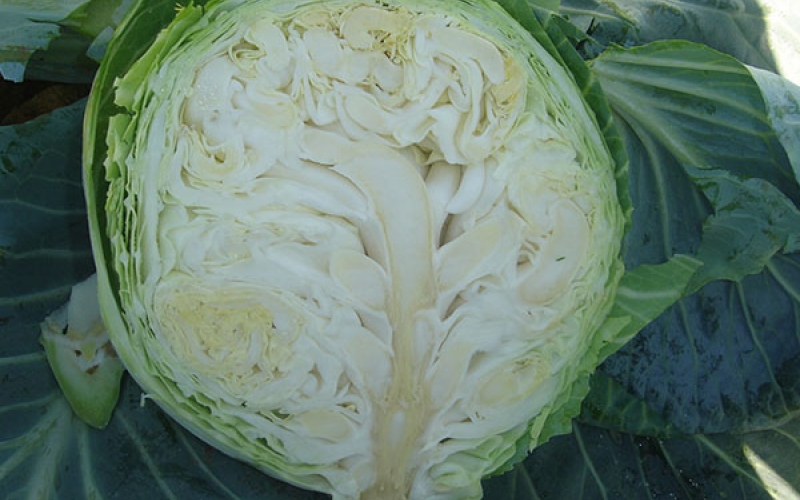
Introduction
Bolting in vegetable crops refers to the plant flowering and producing seed prematurely. In a cabbage crop this would result in the produce being unmarketable and therefore reduced income. Bolting in cabbage is generally triggered by cold weather and can be initiated fairly early in the plant’s development, with the bolting itself occurring when the plant is more mature. It is therefore extremely important that bolting is well understood so that preventative action can be taken in order to produce a marketable product.
It has been forecasted that the current cool season is going to be characterized by very cold temperatures and that bolting in cabbage will be wide spread through out the country. It is therefore essential that growers take precautionary measures to ensure that an acceptable yield will produced.
Factors inducing bolting
The seedling has to have a leaf width of about 10 cm for bolting induction to occur. Bolting can then be induced by temperatures ranging from 5 °C to 15 °C, but particularly below 7 °C, provided seedlings are exposed to such cold for a lengthy period of time. The length of cold required to induce bolting is dependant on a number of factors.
Fertility of seed beds
Seed beds and seedling trays that are over fertilised will cause the plant to have premature seed shoot development. This in turn causes the plant to rapidly grow and become large enough for bolting induction to occur. Secondly, excess fertilizer, especially Nitrogen, favours leaf development over root development which causes greater transplant shock.
Size of seedlings at transplant
Oversized, vigorous seedlings would be more inclined to bolt than smaller seedlings, for the same reasons as above.
Size of plant at induction temperature
There is a minimum plant size required for bolting induction to occur. Generally this size would be when the leaf width of the seedling is about 10 cm. This size would vary from variety to variety and would also be determined by the width of the growing point of the plant. A variety with narrow leaves and thick stem could be induced at a narrower leaf width.
Growth checks
Once the induction has taken place, the response time to bolting is influenced by a number of factors. If there is a growth check, then the response time is shortened and the plant can begin bolting quickly. These growth checks can be caused by heat waves, drought, water logging, disease after induction size has been reached, fertilizer and phyto-toxic sprays.
Diurnal swings
Large diurnal swings are included to cause the plants to bolt very fast once induction has occurred. Induction would depend on the lower temperature of the diurnal swing.
Cold fronts and heat waves
Cold fronts produce low temperatures that may induce bolting with heat waves shortening the response period. If there is succession of such weather bolting will rapidly occur.
Maturity of the variety
Varieties that are later maturing can be more susceptible to bolting than those that are early maturing. The reason for this may be that the growing point of the plant, which is sensitive to cold, is quickly covered in early varieties. These plants will also head before the response time has taken effect. Later maturing varieties are subjected to cold conditions for longer periods of time which may cause increased stress and bolting induction.
Heat susceptibility of the plants
Heat resistant plants are more prone to bolting than heat susceptible varieties. To breed for heat resistance, one automatically predisposes the variety to get early induction to bolting. To select a safe variety for the whole year is difficult therefore heat resistant and cold resistant varieties should be kept for their specific slot. Heat resistant varieties are also more inclined to be later maturing varieties.
Cold grown seedlings
It has been stated before that the plant is responsive to induction to bolt when the leaf blade becomes 10 cm in width. However, seedlings which are sown in very cold areas are more prone to bolting that those that come from warm areas and transplanted into the same field.
Reducing bolting incidence
A number of measures can be taken to prevent excessive bolting of crops and should be carefully considered when a cold season is expected. It is important to be aware of those factors that induce bolting as discussed previously in order to counteract such conditions.
- Seed beds should not be over fertilized to prevent cold induction occurring at a young age. Nitrogen should not be added in excess as this will favour leaf development over that of the roots and causes transplant shock.
- Plant smaller seedlings that are not over sized and too vigorous. These would be less inclined to bolt.
- Be aware that growth checks caused by cold fronts, heat waves, drought, water logging, disease after induction size has been reached, fertilizer and phyto-toxic sprays will shorten the response time and the plant could go directly to seed.
- Ensure that seedlings are not grown in cold conditions and that the nursery is fairly warm. Choose a reputable nursery or take special care when growing your own seedlings. It is also better to obtain seedlings from a nursery in your area to avoid large changes in temperature from the nursery to the field.
- It is essential to plant on warmer fields and not to use areas that tend to be colder. Low lying areas tend to be much cooler and should therefore be avoided. Site selection is extremely important in the prevention of bolting.
- It is important to check for signs of bolting through out the winter season. This can be easily done by cutting heads in half and checking core length. If the core is extending it may be wise to harvest slightly earlier before bolting occurs. The heads may be smaller but will be marketable compared to those destroyed by bolting.
- It is extremely important to choose a good variety that is bolting resistant to plant in cool times. However, it can not be guaranteed that a variety will or will not bolt in an area. One can say that a variety is resistant to bolting but the plant reaction will differ from year to year and according to area. The response of a particular variety to an area will vary due to growing techniques, the climate and the characteristics of the variety. What should be emphasized is that caution should be taken with new lines introduced into a new area, until growing confidence has increased in the area. It is not wise to plant a variety to go through winter that is described as heat resistant.
Conclusion
Many varieties which do not normally bolt, may bolt in a particular year and over a wide area due to a very cold winter or other contributing factors. This winter is expected to be very cold and therefore measures should be taken to prevent bolting where ever possible. Understanding the factors that induce bolting is essential in reducing bolting incidence and implementing preventative measures. However, planting the correct variety in its correct slot will have the greatest impact on the final results of the crop.





